
All categories
Featured selections
Trade Assurance
Buyer Central
Help Center
Get the app
Become a supplier

(341 products available)



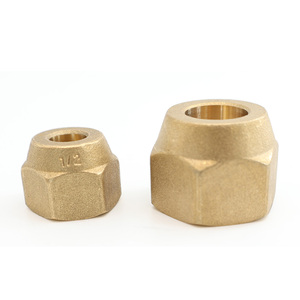


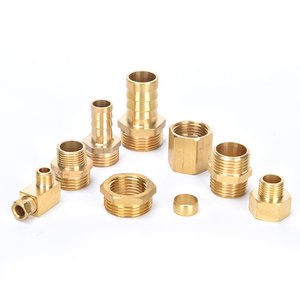

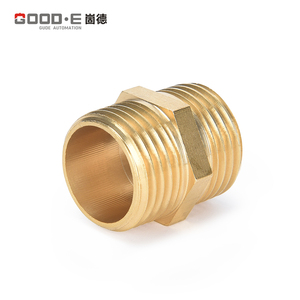

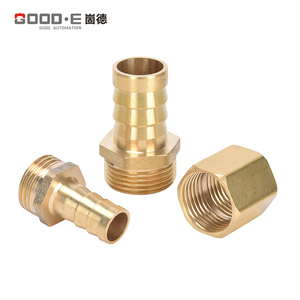














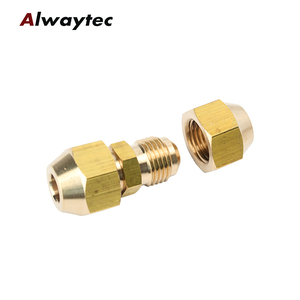






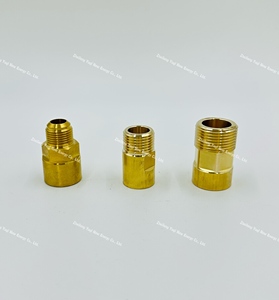
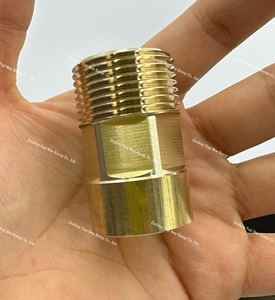
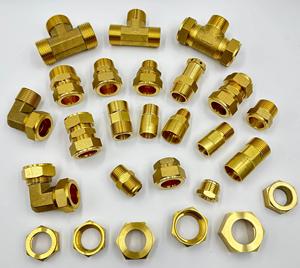
Brass flare nuts are available in distinct types. This helps accommodate different plumbing and HVAC requirements. Below are the common types of flare copper nut brass fitting:
Copper flare nuts are a staple in many industries. This is particularly applicable to those in the HVAC or refrigeration business. The heat resistance feature makes them ideal for systems that require brazing or soldering. In addition, copper's natural resistance to corrosion ensures longevity. This is particularly useful in systems where reliability is essential.
Brass flare nuts are ubiquitous in plumbing and HVAC applications. Their resistance to corrosion ensures a tight, leak-free seal. This is especially important in gas systems, where even minor leaks can pose significant dangers. Compared to copper, brass is more affordable. However, it still maintains high durability. This makes it a widely favored choice.
Flare nuts made of steel are highly durable. Often, they are zinc-coated to prevent rust. They are mainly used in heavy industrial settings. In such environments, high pressure and extreme conditions are commonplace. Although not as resistant to corrosion as brass or copper, the strength of steel makes it suitable for high-stress environments.
Flare nuts made of brass fittings are primarily used in combination with other brass components in plumbing systems. The flare nut's job is to create a seal between the pipe and the fitting. This ensures a leak-free connection. Since both the nut and fitting are made of brass, they guarantee compatibility and long-term stability.
Straight flare nuts are the most common type. These are primarily used in regular gas and fluid lines. Specialty flare nuts, on the other hand, come with unique shapes or additional features. These are designed for specific systems, such as those with dual connections or variable thread patterns. The selection often depends on the specific requirements of the system in question.
Flare nuts are used in various industries. In addition, their versatility and durability make them ideal for many commercial applications. Below are some key commercial uses of flare copper nut brass fitting:
In plumbing, flare nuts are commonly used in both residential and commercial installations. They connect water pipes to fixtures like sinks, toilets, and water heaters. Their ability to create a tight, leak-proof seal makes them indispensable in handling water flow. This ensures that systems maintain integrity and efficiency.
Frequent users of flare nuts are refrigeration and HVAC (Heating, Ventilation, and Air Conditioning) industries. They connect refrigerant lines to compressors, condensers, and evaporators. Thus, helping create a secure and leak-free connection. Given that refrigerants are sensitive to leaks, the role of flare nuts in ensuring seal integrity cannot be overemphasized.
Flare nuts are also used in automotive applications. For instance, they are used in fuel and brake lines. In these systems, the flare nut ensures a leak-free connection between the pipes and the components. Moreover, since vehicles operate under various pressure and temperature conditions, the durability and reliability of flare nuts are crucial for long-term performance.
Handling connections in pipelines, flare nuts are used in the oil and gas industry. They ensure the safe and efficient transport of these potentially hazardous substances. In this high-stakes environment, the seal integrity is vital. Thus, flare nuts' ability to withstand extreme pressures and corrosive substances makes them a preferred choice.
In manufacturing and industrial machinery, flare nuts connect hydraulic and pneumatic systems. These nuts are responsible for conveying fluids or gases. Therefore, their role in providing leak-proof seals is important in maintaining machinery efficiency. Additionally, this helps prevent costly downtime and repairs.
Another key application of flare nuts is in the natural gas and propane distribution systems. They connect gas lines to regulators, meters, and other components. This helps ensure the gas flows safely and efficiently. Since safety is a priority in gas systems, the role of flare nuts in preventing leaks is critical to avoiding potential hazards.
Proper installation of flare nuts is vital for ensuring their effective function and longevity. Below is the installation process, their maintenance, and some precautionary measures:
Gather The Required Tools
Bubble flare tools include a tubing cutter, a bender, and a flaring tool.
Cut The Tubing To Length
The tubing should first be measured and then cut. A clean, straight cut is essential for a proper flare.
Clean The Tubing End
The end of the tubing should be deburred and cleaned to ensure a proper flare and seal.
Form The Flare
The cut end should be secured in a flaring tool and the flare formed. Ensure the flare is even and smooth for a proper fit.
Install The Copper Nut
The copper nut should be threaded onto the tubing. This should be done by hand to avoid cross-threading.
Connect The Flaring Tool
The flare should be done facing outward by the faring tool. This will ensure a proper connection.
Tighten The Copper Nut
The copper nut should be tightened onto the fitting using a wrench. This will ensure a secure, leak-free connection.
Regular Inspections
The environment in which the flare nuts are used should be checked regularly for signs of wear, corrosion, or leaks.
Periodic Lubrication
Brass flare nuts can benefit from periodic lubrication, especially in high-temperature or high-pressure environments. This helps reduce friction and wear.
Keep It Clean
Conducting a clean prevents build-up of debris or corrosive substances. In addition, this will help maintain the integrity of the flare nuts and associated fittings.
Replace When Worn
Although brass flare nuts are durable, they eventually wear out. A good example of this is if they show signs of significant wear or have deep-set corrosion, they should be replaced immediately.
Store Properly
Proper storage of spare flare nuts in a cool, dry place is important. This will help prevent premature corrosion and ensure they are in good condition.
Always Use The Right Size
Ensure that the flare nut used fits the corresponding copper fitting well. This is because an ill-fitting nut can lead to dangerous leaks or system failure.
Check For Damage
Always check for visible signs of damage before installation. If one is found, report it immediately. This damage includes cracks, warping, or excessive wear, as these can compromise the nut's integrity.
Handle With Care
Both flare nuts and their tools should be handled carefully, with proper protective equipment (PPE) worn as necessary. This is because they are often used in high-pressure environments. In such cases, monitoring pressure is very important for safety purposes.
Avoid Over-Tightening
Over-tightening can cause damage to the nut, the fitting, or the connected pipes. In addition, it can lead to dangerous system failures. In industry applications where flare nuts frequently heat up, regularly check for signs of over-tightening nut, like deformation or cracks.
Release Pressure Safely
For flare nuts connected to gas or fluid lines, always release the pressure gradually before attempting to disassemble any fittings. This will prevent sudden releases that could cause injury.
Although flare nuts come in various specifications to cater to different applications, they often share common essential features.
Dome Shape
Flare nuts are designed with a dome shape. This helps in easy gripping and tightening with a wrench. In some cases, they may be slightly extended or modified based on the specific application requirements.
Internal Threading
They come with internal threading. This allows them to be secured onto a pipe or tubing. The thread design varies based on the industry standards and compatibility. Pipe threads have a few threads per inch and are ideal for sealing liquids and gases due to their larger spacing. Conversely, the flare thread is finer and has closer spacing. This is to help provide a better seal for high-pressure applications.
Material Composition
Flare nuts are made from various material compositions. These include brass, stainless steel, and copper. Each material offers distinct advantages. For instance, brass has corrosion resistance, while stainless steel has high tensile strength and is heat-resistant.
Nut Size
Flare nuts are available in a variety of sizes. They are often standardized based on the diameter of the tubing or pipe they fit. The nut size is critical in ensuring proper sealing. Thus, users should always choose the right size for their project.
Corrosion Resistance
Nickel alloys help improve flare nut brass fitting's corrosion resistance. This is especially the case in environments with moisture, chemicals, or changing temperatures.
Application Requirements
Consider if the flare nut is for plumbing, HVAC, or industrial use. This will help determine if a copper, brass, or steel nut is required. In addition, gauge the pressure and temperature conditions it will have to tolerate. This will guide the material selection.
Material Durability
Evaluation of the operating environment should be done before choosing the material. For instance, brass is ideal in corrosive environments. On the other hand, stainless steel is more suited for high-strength applications.
Cost Considerations
Brass nuts are very cost-effective. Thus, they can be used in projects that require a large number of units or where budget constraints are a factor. While stainless steel nuts are more expensive, they are more durable and have a lower lifetime maintenance cost. Therefore, it makes sense to consider long-term benefits over the initial investment.
Compatibility Factors
The existing system's components should be considered when choosing a flare nut. These components are the tubing or pipe material and other fittings. For instance, since copper and brass have a similar composition, they are ideal for combined systems. In situations with diverse materials, it is best to consider a stainless steel nut. This is due to its high corrosion-resistance property.
A1: A flare nut is a specially designed nut. It is used in conjunction with a flared tube to create a tight and leak-proof seal in various fluid and gas systems. Made from durable materials, flare nuts ensure long-lasting, reliable performance in plumbing, HVAC, automotive, and industrial applications.
A2: Frequently used in refrigeration and HVAC systems, copper flare nuts connect refrigerant lines and components. Their resistance to high temperatures and pressure makes them particularly suitable for systems that involve heat exchange. Moreover, their lightweight design helps reduce overall system weight without compromising strength or durability.
A3: While both flare nuts and fuel line nuts are used in fluid systems, they serve different purposes. Flare nuts are used to seal gas or fluid lines, while fuel line nuts are specifically designed for fuel lines in automobiles. Usually, fuel line nuts have an integrated washer or special design to accommodate the specific sealing requirements of fuel systems.
A4: A flare nut should be tightened securely but not excessively. Over-tightening can cause material deformation and damage the flare or the nut itself. In addition, it leads to stress fractures, which can compromise the seal and integrity of the system. Always check the manufacturer's recommendations for torque specifications.